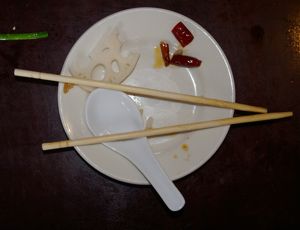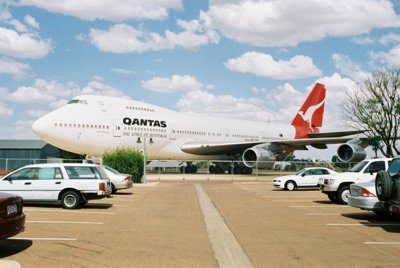6th August 2006
The current conflict in the Middle East highlights that, even for the most optimistic, enduring peace in the region is long way away. What is the answer. The claims of Bush, Blair er al that the battle will be won have become increasingly hollow as they are incapable of preventing the ongoing violence in Lebanon and Israel. Is there an solution, a way forward ?
The most useful comment I have read was quoted by Alan Ramsey in his column in the Sydney Morning Herald (29 July 2006). He cites an article by Rami Khouri, editor at large of the Beriut Daily Star.
“The Lebanon and Palestine situation today reveal a key political nd psychological dynamic that defines several hundred million Arabs. It is that peace in the Middle East requires three things: 1) Arabs and Israel must be treated equally 2) domestically and internationally, the rule of law must define the actions of governments and all members of society; and 3) the core conflict between Palestine and Israel must be resolved in a fair, legal and sustainable manner.â€
These ground rules seem utterly reasonable and certainly not ‘radical’ or – but how long before they are acknowledged as the basis for a way forward and lasting solution for peace.
6th August 2006
What will be the epitaph for the late 20th early 21st century. A possible candidate is surely the Age of Waste. Never before has waste and excessive consumption been so rampant. Twenty years, domestic garage was collected weekly in a modest size bin. Today, it is two wheelie bins – one for waste and the other for recycling. While recycling is commendable, the volume points to the amount of material that is used for packaging or as containers.
In a recent article in the Sydney Morning Herald Weekend Magazine (10 June 2006), Fenella Souter presented some alarming statistics on waste in Australia. In 2004 Australians spent $5.3 billion on food we did not eat!! That includes fresh food, uneaten takeaways, leftovers, frozen food. This amount equates to about $260 per person in Australia per year. But food is only one part of the equation of waste – clothes, electronic equipment, mobile phones, cars – the list goes on and on. Partly the problem is the cheapness of goods and so it becomes so much easier to buy something new rather that repair or re-condition.
At the moment little thought is given to the long term consequences. But all of the world’s population cannot go on consuming and waste at the current rate. It surely is time to be more prudent about how much we consume and waste less.
25th May 2006
Tennesse Williams, I think, once commented about the thin veneer of civilisation over barbarism. Alan Ramsay in a recent article in the Sydney Morning Herald (12 Nov 2005) highlights some of the signs of tyranny in contemporary society. He quotes from a speech by Dr Davidson Loehr, a US pastor with the First Unitarian Church in Texas. He also quoted by an essay by Dr Lawrence Britt a political scientist ‘Fascism Anyone?’
Britt identifies 14 identifying characteristics of fascism. ‘These included the constant use of patriotic mottos, slogans, symbols, songs. Flags are seen everywhere. Disdain for human rights: because of fear of enemies and the need for national security, people are persuaded human rights can be ignored in certain cases because of ‘need’. People tend to look the other way or even approve. Identification of enemies and scapegoats: people are rallied into a unifying patriotic frenzy over the need to eliminate a perceived common threat or foe – racial, ethnic ore religious minorities; liberals, communists, socialists and terrorists.
Supremacy of the military [which receives] a disproportionate amount of government funding. Obsession with national security: fear is used as a motivational tool. Corporate power is protected, labour power is suppressed. Unison are either eliminated or severely suppressed, the industrial and business aristocracy are often the ones who put the government leaders into power. Disdain for intellectuals and the arts.
It is too easy to think never in Australia but …
12th December 2005

It is hard to imagine that the humble chopstick is an environmental problem. But it does become one when chopsticks are the principal eating implement for a country such as China and when the use of disposable chopsticks is rising rapidly. A recent article in the China Daily suggested a return to fingers. Why?
China has 300 plants with 60,000 workers exporting some 140,000 to 165,000 tons of chopsticks. China itself uses 45 billion pairs of disposable chopsticks per year. That consumes 25 million fully grown trees per year – about 2 million square meter of wooded land. Yes a problem indeed.
12th April 2005

Longreach aerodrome. What’s a jumbo doing there. It has been donated to the Qantas Museum by Qantas and must be one of the largest museum object in the world. But what of its long term future. How will it be conserved. And what of public access.
Update: January 2020.
I have recently been contacted by Chris Dudar who works at the National Museum of Natural History, Washington. He has pointed out that Howard Hughes ‘Spruce Goose’ is the largest museum object inside a museum with a length of 66.6 m. it is housed in the Evergreen Aviation Museum in McMinnville, Oregon. The Boeing 747 has a length of 76 m but it is outside so does it properly qualify as a museum exhibit? Regardless of what constitutes a museum exhibit/object, both are very large.


